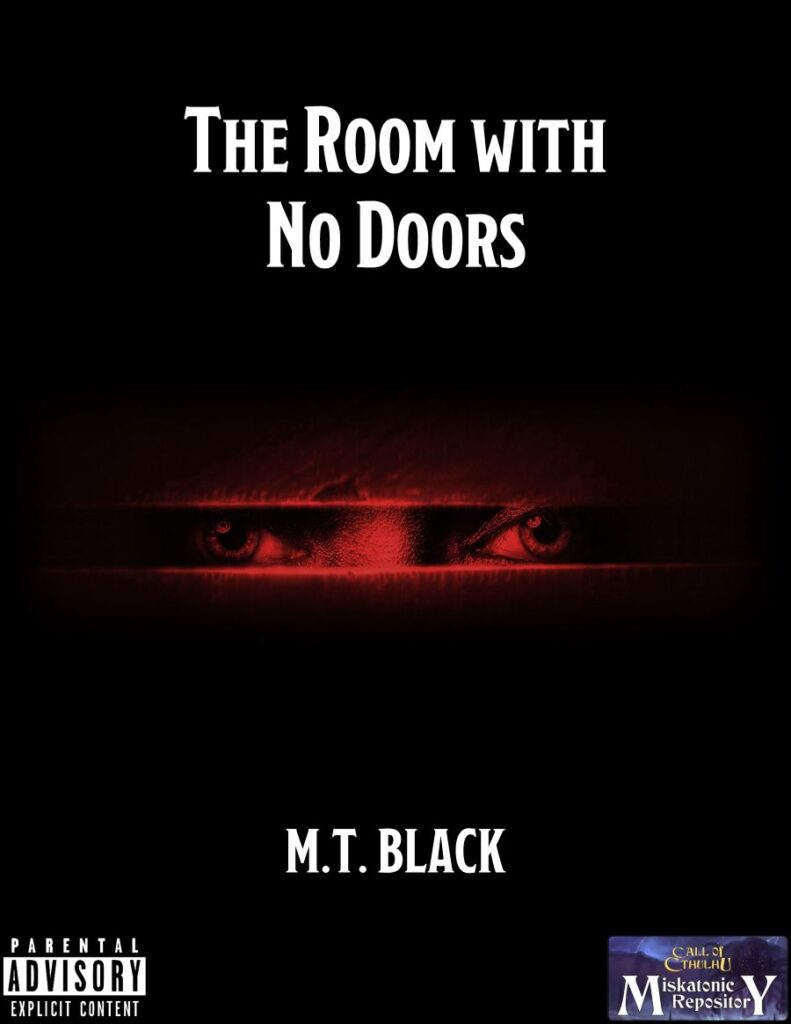I recently ran M.T. Black’s Call of Cthulhu adventure, “The Room with No Doors”.
We had fun.
I see this as a single-session adventure. The text says it runs in 3-6 hours, but we ran it in about three, perhaps a little under. At its heart, it is a ghost story. The characters need to investigate a haunted house and stop the haunting there.
However, as the ghost has already murdered people, it is not without some risk.
The adventure typically runs in two acts. In the first act, the players learn about the house’s history through interactions with people and institutions in Arkham. While doing so, they may discover ways to stop the haunting. In the second act, they investigate the house itself, and with luck, stop the terror.
I can see the potential of the characters escaping the house at some point and returning to the town to do more research. The adventure is open in how it could proceed.
Plenty of handouts help set the tone of the adventure. What the players can learn is very nicely structured. I am not so sanguine about how the players discover it. As written in the scenario, they visit a location, make a check (often Library Use) and if they fail it, that is it for the area – there is nothing further to learn there.
The trouble with this comes primarily with each location being rather bare of information. The characters do not have the option of finding pieces of lore. It is all or nothing. A few bad rolls and the group can get quite frustrated.
It is not a new problem for investigative role-playing games. It is part of the reason for the development of GUMSHOE-style RPGs. But, in an adventure that likely has very few skill checks, it places more importance on success than otherwise.
Some locations give the players the information they need with no rolling required. And part of the interest in the play is in seeing which places they visit – their choices in the investigation can have significant effects on how they deal with the haunting.
So, I have mixed feelings about the investigation. The handouts are great. The information the players find is intriguing. But you may need to consider how to handle failed rolls.
Once the characters start investigating the house; well, this is one of those matters where the individual Keeper is going to make a difference in how the adventure plays. The text gives several suggestions for odd events that bring out the haunted house aspect, but not everyone is good at using them to evoke the unsettling atmosphere. (I count myself as one who is average at best).
I felt I was somewhat better once the players released the Horror – yes, it has a physical form! – and it started chasing them through the house; it is always interesting to see how players deal with stressful situations. The characters displayed much courage and ingenuity as they tried to lure it away, while one sneaked in to lay the Horror to rest.
There is a real chance that one or more characters might die in this section – one of the characters was reduced to 1 hit point and was only saved by another character having prepared themselves with a garden hose!
It is tremendously unlikely anyone might lose much sanity, however. The haunt is the only real way to lose sanity throughout the adventure. The adventure is more unsettling in the content and history the characters learn rather than its frights.
My group ended the adventure successfully: the characters laid the haunt to rest, and none of the party died! However, it was a close-run thing. And I very much appreciate that the adventure can have different resolutions – the structure allows for flexibility in approach.
While the handouts are nicely detailed, many of the location and NPC descriptions are lightly sketched and rely on the Keeper adding to them. I feel that this is about the level of detail I need, but it is worth noting.
Compared to some Call of Cthulhu adventures, this one leans but lightly on the setting’s mythology. It is an entertaining tale, nicely presented. It feels more like one that would fit into a campaign – as the odds are high that all the characters would survive! – rather than as the “Only one survived to tell the tale” adventure that is often the case with Call of Cthulhu one-shots.
Overall, I recommend The Room with No Doors!

